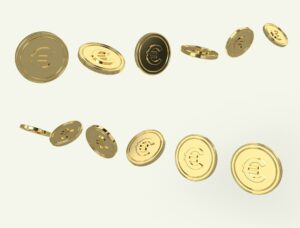Understanding Forex Trading Symbols: A Beginner’s Guide
Forex trading has gained immense popularity in recent years, attracting both seasoned traders and beginners looking to explore the world of financial markets. As a beginner in the Forex market, it is crucial to understand the various trading symbols associated with this market. Forex trading symbols can be confusing, but with a little knowledge and guidance, you can navigate through this complex web of symbols effortlessly.
In the Forex market, trading symbols represent the currencies being traded. Each currency pair is denoted by a unique symbol, which consists of a three-letter code representing the base currency and a three-letter code representing the quote currency. For example, the symbol EUR/USD represents the Euro (EUR) as the base currency and the US Dollar (USD) as the quote currency. Understanding these symbols is essential as they form the backbone of Forex trading.
Let’s take a closer look at some commonly used Forex trading symbols and their meanings:
1. EUR/USD: The Euro/US Dollar currency pair is one of the most actively traded pairs in the Forex market. It represents the exchange rate between the Euro and the US Dollar. If you believe that the Euro will appreciate against the US Dollar, you would buy the EUR/USD pair, and if you believe the Euro will depreciate, you would sell the pair.
2. GBP/USD: The British Pound/US Dollar pair represents the exchange rate between the British Pound and the US Dollar. This pair is highly influenced by economic and political events in the United Kingdom, making it attractive for traders looking to capitalize on market volatility.
3. USD/JPY: The US Dollar/Japanese Yen pair is known as the “Ninja” in the Forex market. It represents the exchange rate between the US Dollar and the Japanese Yen. This pair is heavily influenced by the Bank of Japan’s monetary policy decisions and economic indicators from both countries.
4. AUD/USD: The Australian Dollar/US Dollar pair represents the exchange rate between the Australian Dollar and the US Dollar. This pair is often referred to as the “Aussie” and is influenced by commodity prices, particularly gold and iron ore, as well as economic data from Australia.
5. USD/CAD: The US Dollar/Canadian Dollar pair represents the exchange rate between the US Dollar and the Canadian Dollar. This pair is influenced by oil prices, as Canada is a major exporter of oil, as well as economic data from both countries.
It is important to note that each currency pair has its own characteristics and volatility. Some pairs are known to be more volatile, while others are relatively stable. Understanding the unique characteristics of each pair can help you make informed trading decisions and manage your risk effectively.
In addition to the trading symbols for currency pairs, Forex trading also involves symbols for other financial instruments. For example, the symbol XAU/USD represents the exchange rate between gold (XAU) and the US Dollar. Similarly, symbols such as USOIL and UKOIL represent the price of crude oil in US Dollars and British Pounds, respectively.
To make sense of these symbols, it is crucial to have access to a reliable Forex trading platform. These platforms provide real-time quotes and charts, allowing you to track the movements of various symbols and make informed trading decisions.
In conclusion, understanding Forex trading symbols is essential for beginners entering the Forex market. These symbols represent currency pairs and other financial instruments, allowing traders to speculate on the exchange rate movements. By familiarizing yourself with the commonly used symbols and their meanings, you can navigate the Forex market with confidence and make informed trading decisions. Remember, practice and continuous learning are key to becoming a successful Forex trader.





